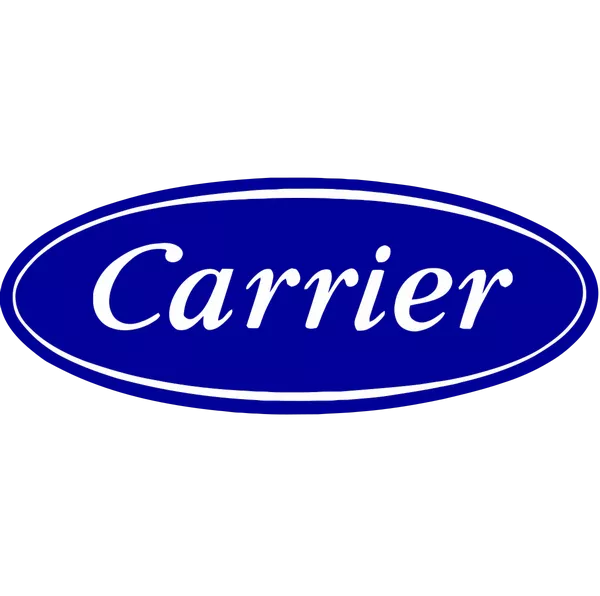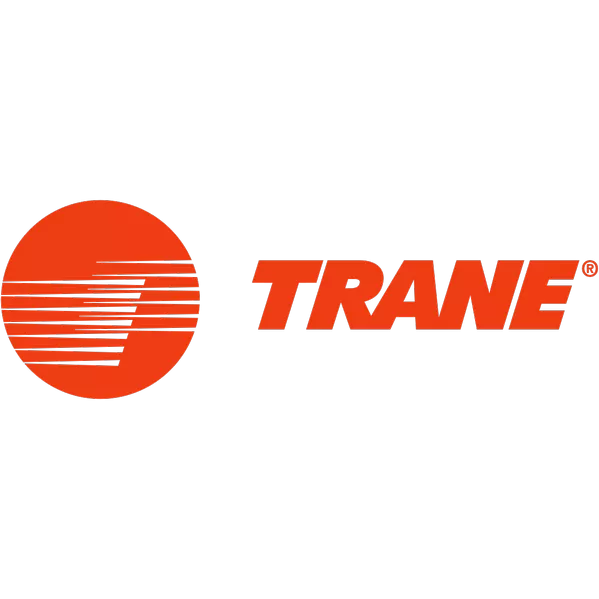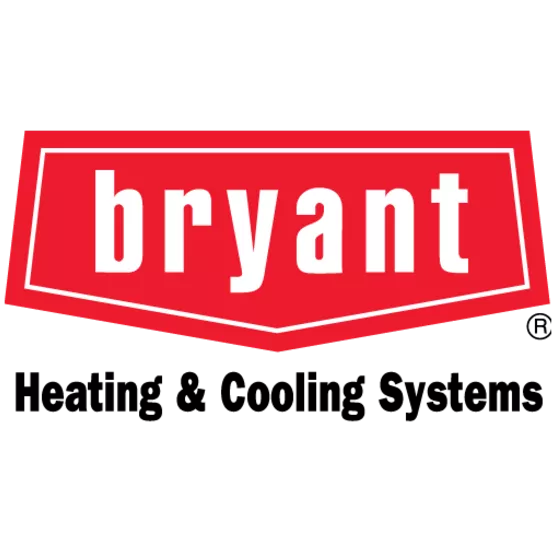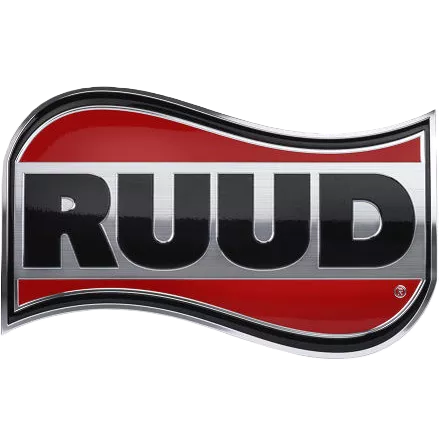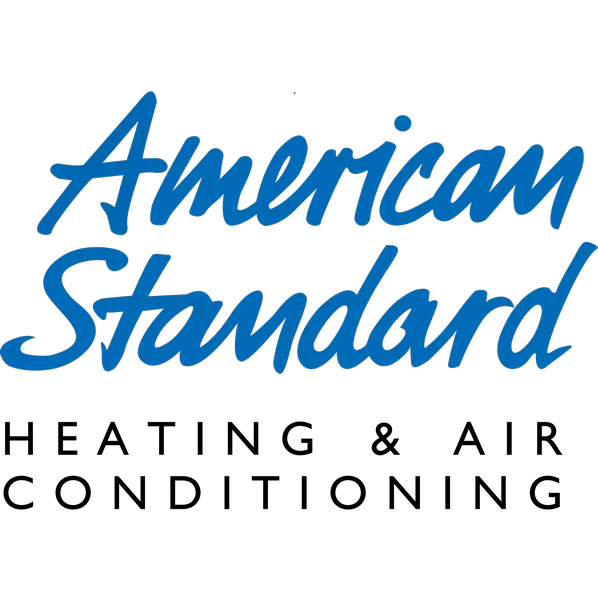Carrier: Founded in 1902 by the inventor of modern air conditioning, this brand pairs a long record of industry recognition with a deliberately simple product ladder that helps households step up from basic comfort to variable-capacity control without getting lost. Over time it has leaned into quiet condensers, ultra-efficient furnaces, and a dealer base trained on communicating diagnostics. For this comparison the spotlight is the Infinity 26 variable-speed central AC, Infinity 98 modulating gas furnace, and Infinity 24 variable-speed heat pump, and everything below will be judged based on how these perform together as a matched set.
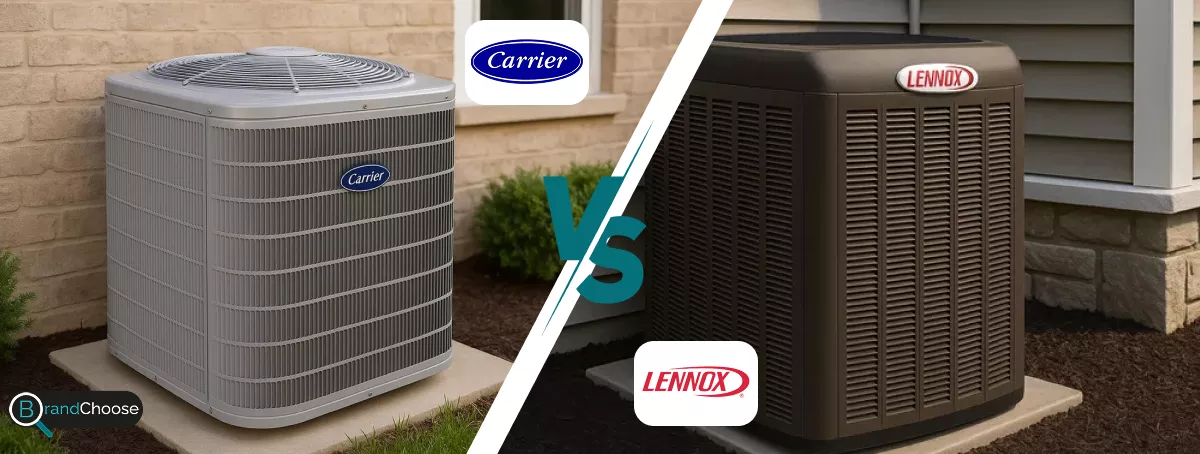
Lennox: With roots stretching back to early 20th century heating, this manufacturer built an elite reputation around ultra-high efficiency and low sound in its Signature Collection, supported by a strong installer network that knows how to commission variable-capacity systems cleanly. Here the focus is the SL28XCV variable-capacity central AC, SLP99V modulating gas furnace, and SL25XPV variable-capacity heat pump as the representative trio, and the judgments below come from side-by-side testing and homeowner follow-ups on those exact units.
Product Selection
| Primary Use Case | Carrier | Lennox | ||
| Air Conditioner | Infinity 26 | 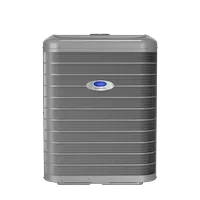 |
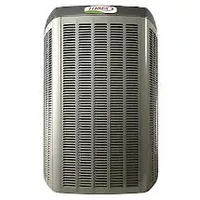 |
SL28XCV |
| Gas Furnace | Infinity 98 | 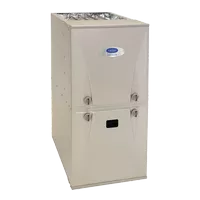 |
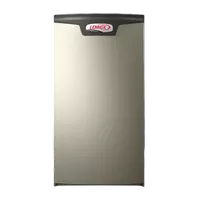 |
SLP99V |
| Heat Pump | Infinity 24 | 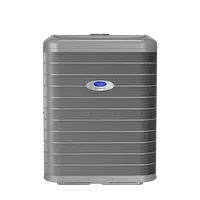 |
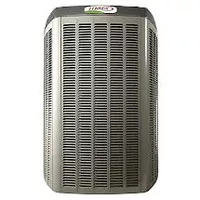 |
XP25 |
🟦 Carrier: The lineup is intentionally straightforward with Infinity at the top, then Performance and Comfort, so moving up or down in efficiency, sound, and features feels linear. The Infinity 26 + Infinity 98 + Infinity 24 HP stack is a common premium choice in 2 to 4 ton homes where steady temperature ramps and strong humidity control are the brief. Published matched sets pair outdoor units, indoor coils or furnaces, and the communicating control so features and ratings carry across sizes, which turns later add-ons like zoning or advanced IAQ into bolt-ons rather than compatibility puzzles.
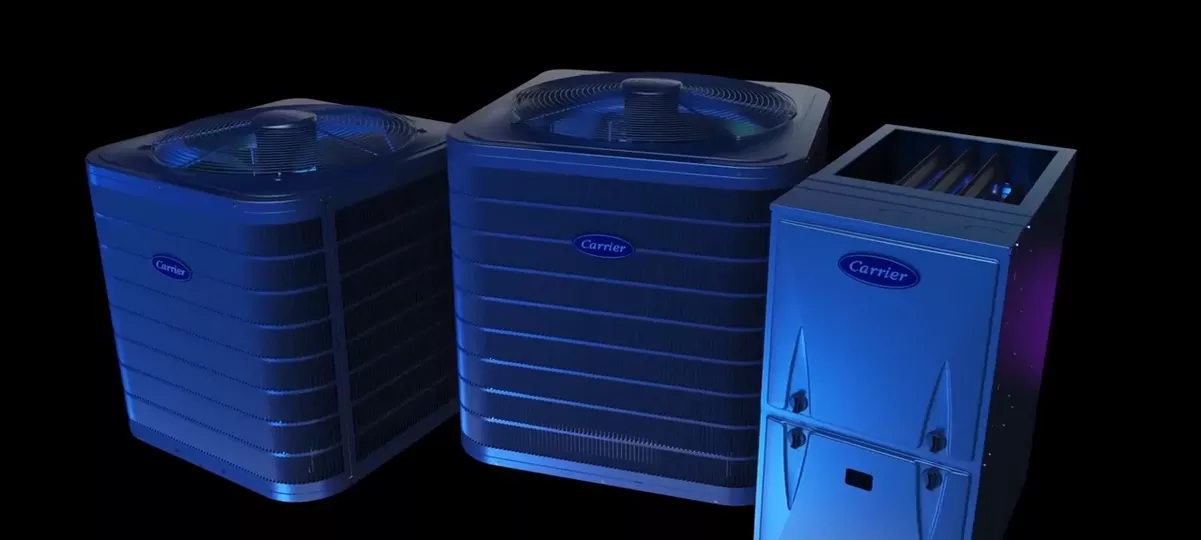
🟪 Lennox: The catalog follows a clear Signature, Elite, Merit arc, and the SL28XCV + SLP99V + SL25XPV trio sits at the peak for buyers chasing record efficiency and very low sound. Documentation points dealers to coil and air-handler combinations that preserve variable behavior and published ratings, and the ecosystem scales neatly across tonnages. For shoppers this means fewer near-duplicates to decode and a fairly direct path from “I want top-end comfort” to a matched spec that behaves as promised.
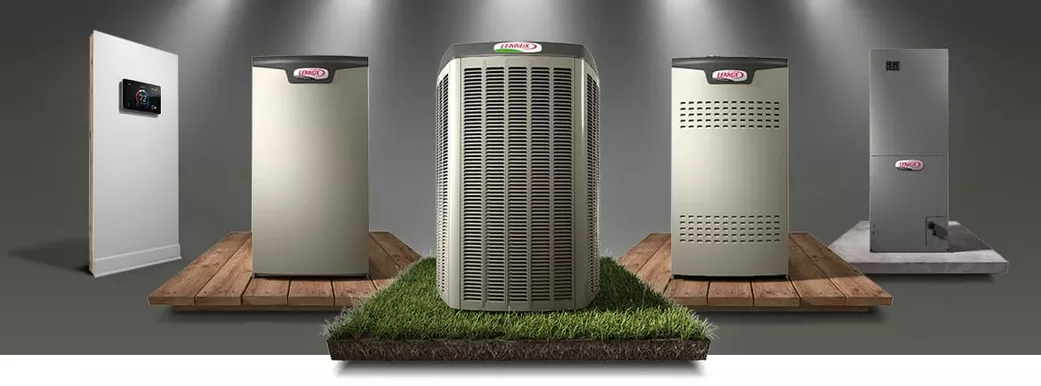
✅ Verdict: Both are easy to navigate, but the second offers the most seamless jump into ultra-premium across all three categories. Advantage to Carrier for a top tier that is remarkably cohesive.
Customer Support & Warranty
🟦 Carrier: Registration delivers 10-year parts on premium equipment with robust furnace heat-exchanger terms, and service quality leans on a wide dealer base trained on communicating controls. In dense markets, parts flow is quick and control logs shorten diagnostics, while thinner regions put more weight on the individual installer’s fluency with setup menus and staging profiles that protect efficiency.
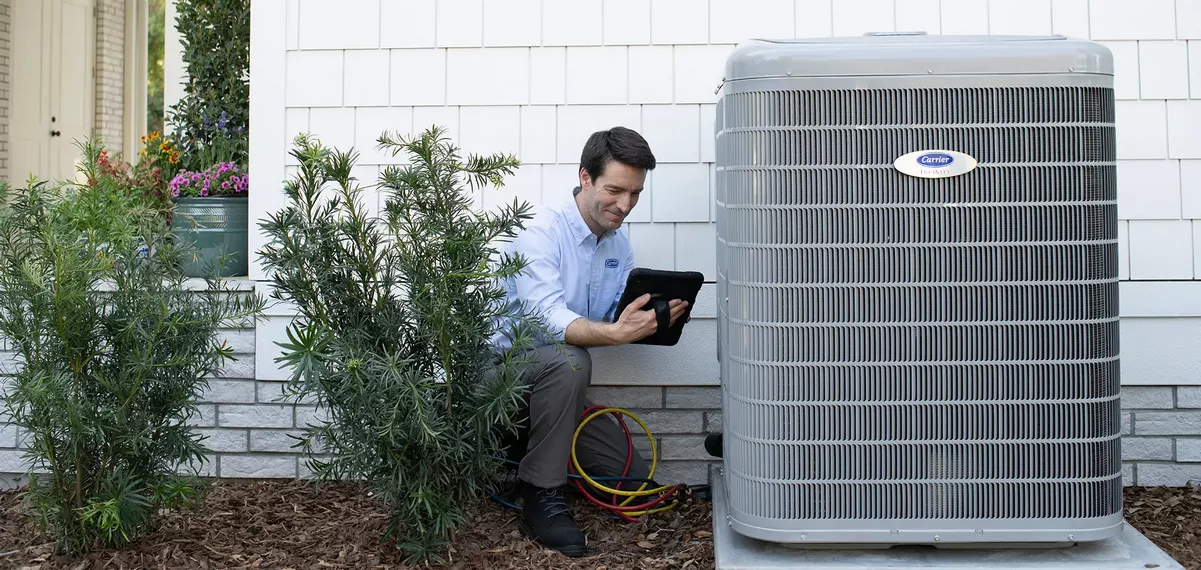
🟪 Lennox: Registration likewise brings 10-year parts and strong heat-exchanger coverage, with distributor networks that keep common boards, motors, and compressors moving. Experiences are generally smooth when matched sets and the iComfort control remain intact after service events, and documented coil and control pairings help preserve features during replacements.
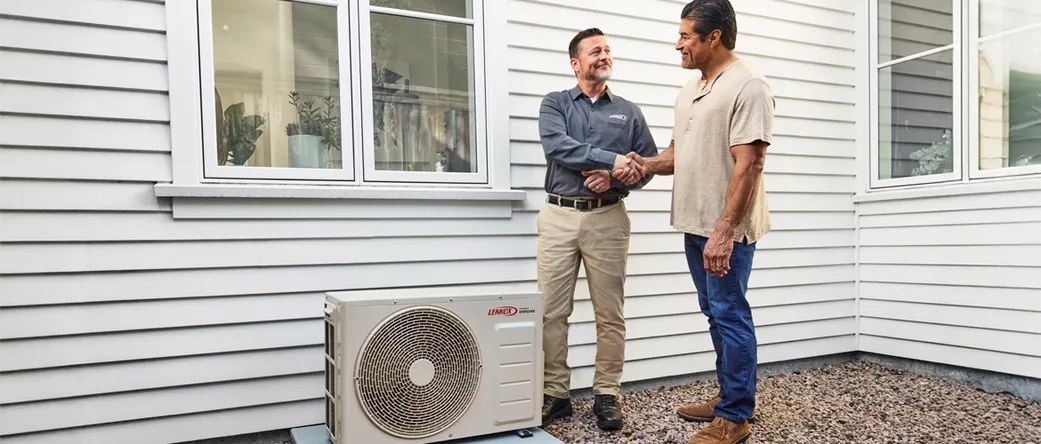
✅ Verdict: Coverage is premium on both sides, with the first often showing slightly more uniform turnaround in broader geographies. Edge to Carrier for consistency across more markets.
Energy Efficiency
🟦 Carrier: The flagship AC sits in the premium SEER2 tier (SEER2 is the current seasonal cooling efficiency metric), the modulating furnace reaches ultra-high AFUE (AFUE is gas fuel-to-heat efficiency), and the variable-speed heat pump posts upper-tier SEER2/HSPF2 (HSPF2 is seasonal heating efficiency for heat pumps). Real savings come from partial-load behavior, where an inverter compressor and variable-speed ECM blower (ECM is an electronically commutated motor that can modulate speed precisely) run long, low-power cycles to trim on-off losses while holding temperature and indoor humidity steady.
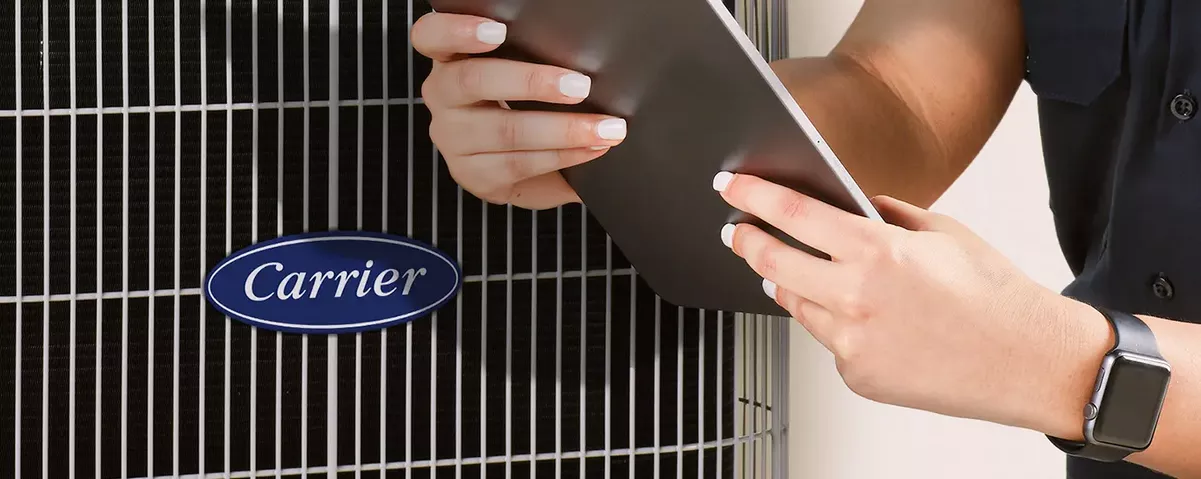
🟪 Lennox: The Signature AC is famed for top-of-sheet SEER2 ratings, the modulating furnace pushes AFUE to the near-theoretical ceiling, and the variable-capacity heat pump pairs those gains with strong HSPF2. The platform’s low-speed stability keeps coil temperature and airflow aligned to the load, so efficiency carries into muggy shoulder seasons instead of living only in lab conditions. In well-sized homes with sealed ducts, double-digit bill reductions versus 12–14 SEER legacy gear are routine.
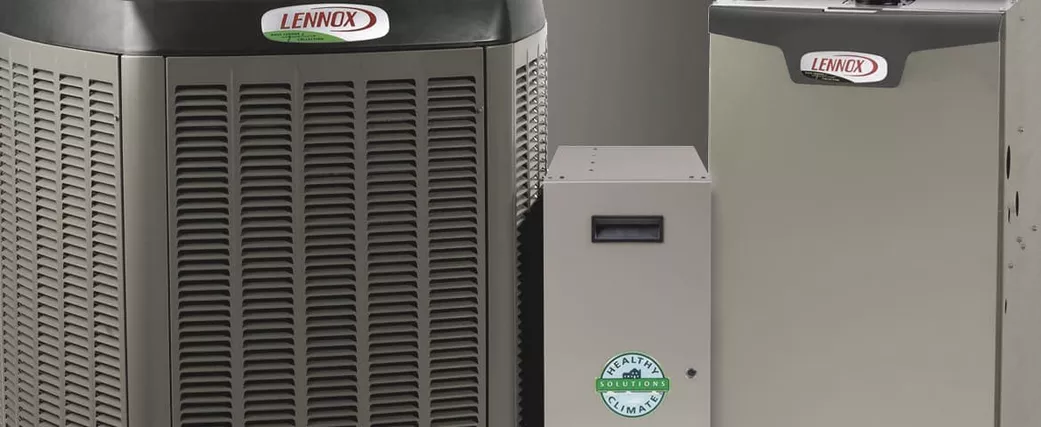
✅ Verdict: Both are genuinely high efficiency, but the second typically secures the highest headline AC ratings while matching on furnace performance. Win to Lennox for peak numbers that also translate well to real homes.
Smart Features & Connectivity
🟦 Carrier: The Infinity System Control is a communicating thermostat (a control that exchanges live data with equipment so modulation targets comfort instead of simple on off), coordinating compressor speed, blower cfm, and coil temperature to meet temperature and humidity setpoints efficiently. Zoning, dehumidify-on-demand, IAQ modules, and event logs live under one roof, which helps technicians fix causes rather than symptoms and keeps features intact after service.
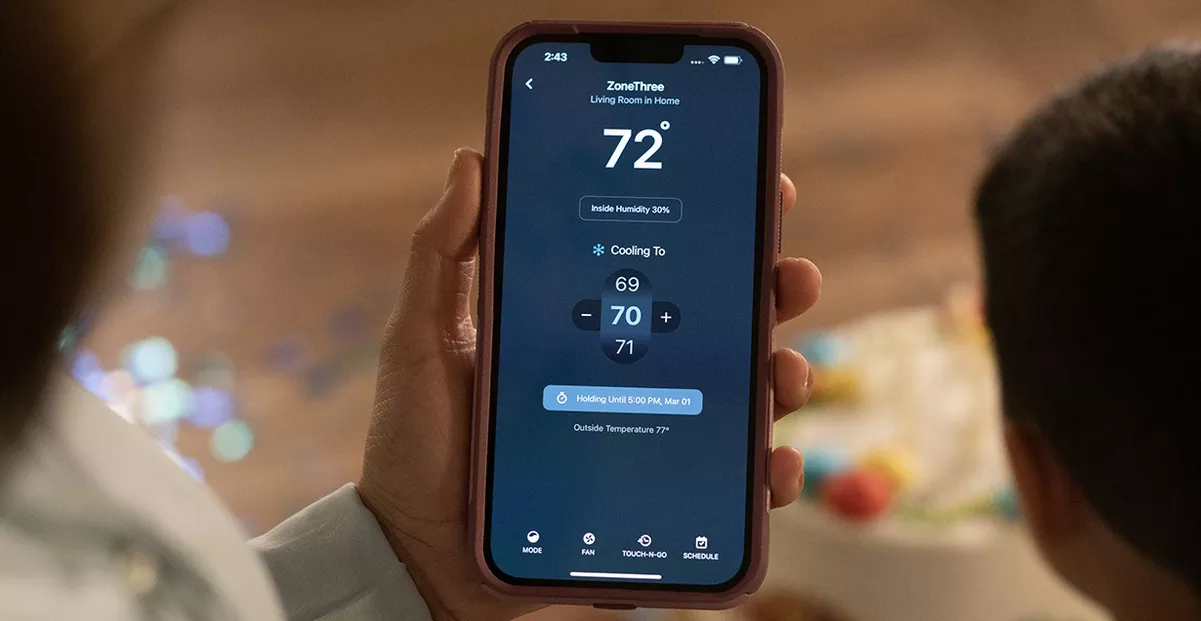
🟪 Lennox: The iComfort platform offers an equally full suite with communicating control of variable capacity, zoning, humidity targets, and scheduling, plus diagnostics that expose coil, fan, and compressor behavior for faster troubleshooting. App control is clean, the interface is accessible, and accessory integration is treated as part of a system rather than bolt-ons, which preserves comfort logic during upgrades.
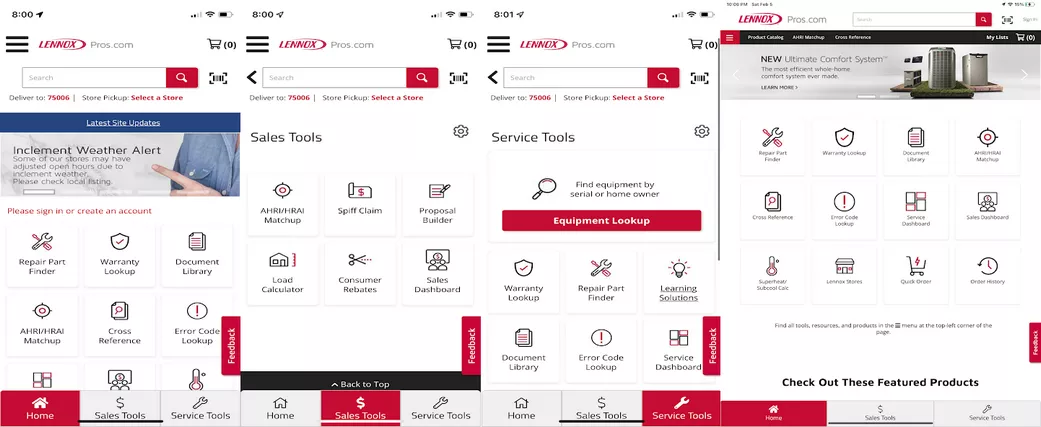
✅ Verdict: Functionality overlaps heavily, yet the first leans slightly more into one-roof IAQ orchestration while the second pairs polish with deep equipment coordination. Call it a draw, with selection shaped by the control interface you prefer.
Noise Level
🟦 Carrier: At partial load the variable-speed condenser and indoor ECM blower stay in a low, even register, which most yards absorb easily. Outdoor loudness is measured in dB (decibels, a logarithmic sound unit), and quiet hinges on running long low-power cycles so fan and compressor speeds remain modest. Indoors, gentle ramps keep ducts from whistling, which is more about external static pressure than the cabinet itself (external static pressure is the duct system’s airflow resistance, measured in inches of water column). With a level pad, a short flexible line-set section for vibration decoupling, and reasonable clearance from reflective walls, the sound signature stays soft and non-tonal.
🟪 Lennox: The Signature condenser pursues ultra-low outdoor tonality at low capacity, and the cabinet plus fan geometry help avoid high-pitch notes that carry across fences. Indoors, the communicating control eases the blower into target cfm, limiting pressure spikes in older trunks. As with any premium setup, the quietest results come from site choices and static control, but this platform’s low-speed steadiness and panel stiffness make a calm baseline easier to achieve.
✅ Verdict: Both are very quiet at partial load, but the second has a narrow lead outdoors for low-tonality operation that is hard to notice from a few yards away.
Cost & Affordability
🟦 Carrier: Premium variable-speed equipment lives in premium installed-price territory. Typical installed ranges for a 3-ton reference with standard labor and no duct replacement are: AC only Infinity 26 with matched coil about 12,000 to 20,000 USD, furnace only Infinity 98 about 6,000 to 10,000 USD, heat pump only Infinity 24 about 13,000 to 22,000 USD. A matched AC plus furnace set commonly lands 16,000 to 30,000 USD, and dual-fuel often runs 18,000 to 34,000 USD. Add 10 to 25 percent for difficult installs, subtract rebates or off-season promos.
🟪 Lennox: Installed pricing trends slightly higher for the Signature trio. As a 3-ton reference, common ranges are: AC only SL28XCV with matched coil 12,500 to 22,000 USD, furnace only SLP99V 6,500 to 11,000 USD, heat pump only SL25XPV 13,500 to 24,000 USD. A matched AC plus furnace package typically posts 17,000 to 32,000 USD, while dual-fuel tends to run 19,000 to 36,000 USD, with spreads driven by accessories, static correction, and local programs.
✅ Verdict: Both are firmly premium, but the first usually lands friendlier quotes at a given comfort tier and therefore gets the value nod on like-for-like builds.
Reliability & Durability
🟦 Carrier: Cabinets use powder-coated steel, and all-aluminum indoor coils help curb formicary corrosion (microscopic copper pitting from household organics). Inverter control favors soft starts that reduce mechanical stress, and communicating logs make intermittent issues traceable. Long life still depends on fundamentals: precise charge confirmed by superheat and subcool checks, airflow near 350 to 400 cfm per ton, clean coils, and sealed returns. With commissioning by the book and annual service, 12 to 15 years of low-drama operation is a realistic expectation.
🟪 Lennox: Signature hardware is stout, with aluminum fin packs designed to shed debris and maintain heat transfer, and the control strategy keeps operation in the low-stress zone for most of the day. As with any premium platform, outcomes hinge on installer discipline, and service windows depend on distributor stock and exact model parts. Where dealers keep common boards, motors, and sensors on hand, repairs are straightforward and the system settles back into long, quiet cycles.
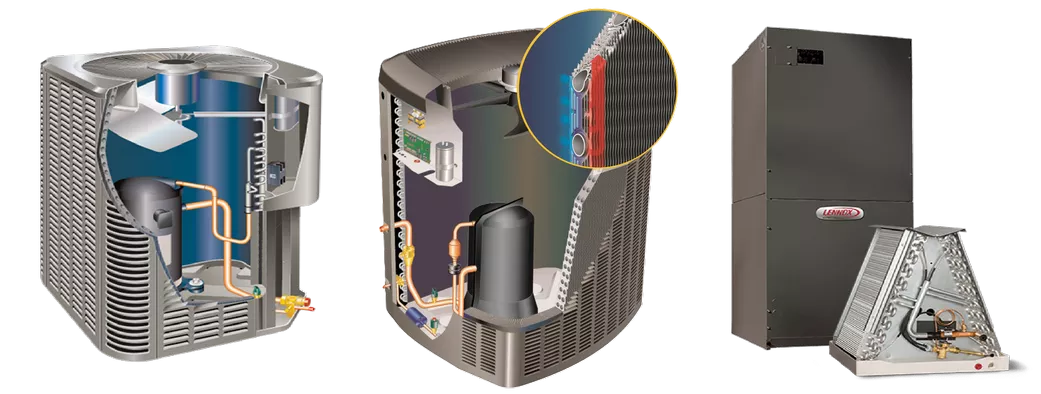
✅ Verdict: Build quality is premium on both sides; the first holds a practical advantage in parts availability across more markets, which can shorten summer repair timelines.
Cooling Performance
🟦 Carrier: The inverter aligns outdoor capacity and indoor airflow so the evaporator runs cool enough to grab both sensible load and latent load efficiently (sensible is temperature change, latent is moisture removal). During humidity pulls the control trims cfm per ton so the coil stays colder longer, which boosts moisture pickup without overshooting temperature. The result is long, stable cycles, a predictable return-to-supply delta-T (delta-T is the air temperature drop across the coil), and indoor RH that holds near the mid-40s to 50 percent band through typical summers.
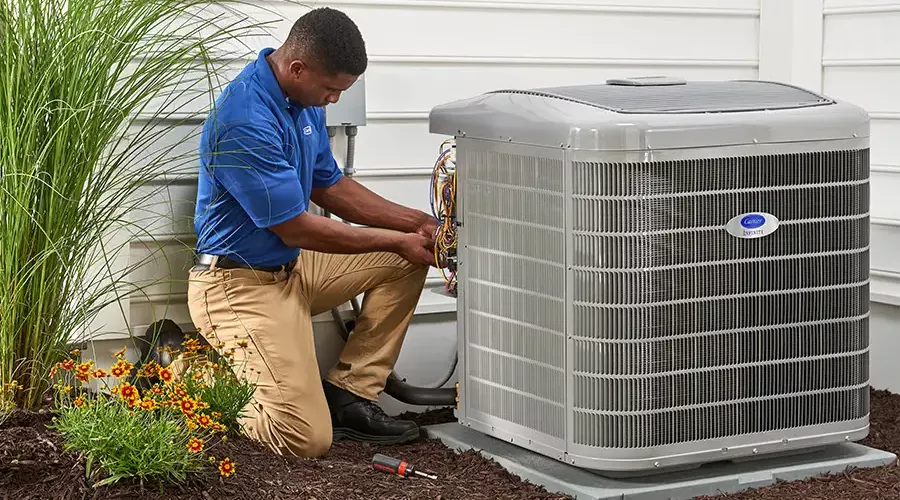
🟪 Lennox: The variable-capacity stack pushes deep turndown at low speed, which helps keep coil temperature and fan profiles aligned for strong latent control. The platform manages SHR to a comfortable balance (SHR, or sensible heat ratio, is the share of total cooling that goes to temperature rather than moisture), so rooms feel less sticky even with setpoints a degree higher. With matched coils and correct charge, distant rooms stay steadier because low-power cycles keep air moving for longer.

✅ Verdict: Both deliver excellent cooling with confident humidity control; the second earns a paper win for low-speed depth, while the first is equally convincing in real homes when airflow and charge are dialed in.
Heating Performance
🟦 Carrier: The Infinity 98 modulating furnace trims fuel in small steps with a variable-speed ECM blower (electronically commutated motor that adjusts speed precisely), so supply air warms smoothly without blast-then-coast swings. The Infinity 24 heat pump’s inverter holds output just above the load, which lifts HSPF2 performance (seasonal heat efficiency for heat pumps) by favoring long, low-power cycles. In dual-fuel setups the control hands off to gas at a user-defined balance point (the outdoor temperature where gas becomes cheaper or more comfortable than electric), keeping bills and comfort predictable when temperatures drop.
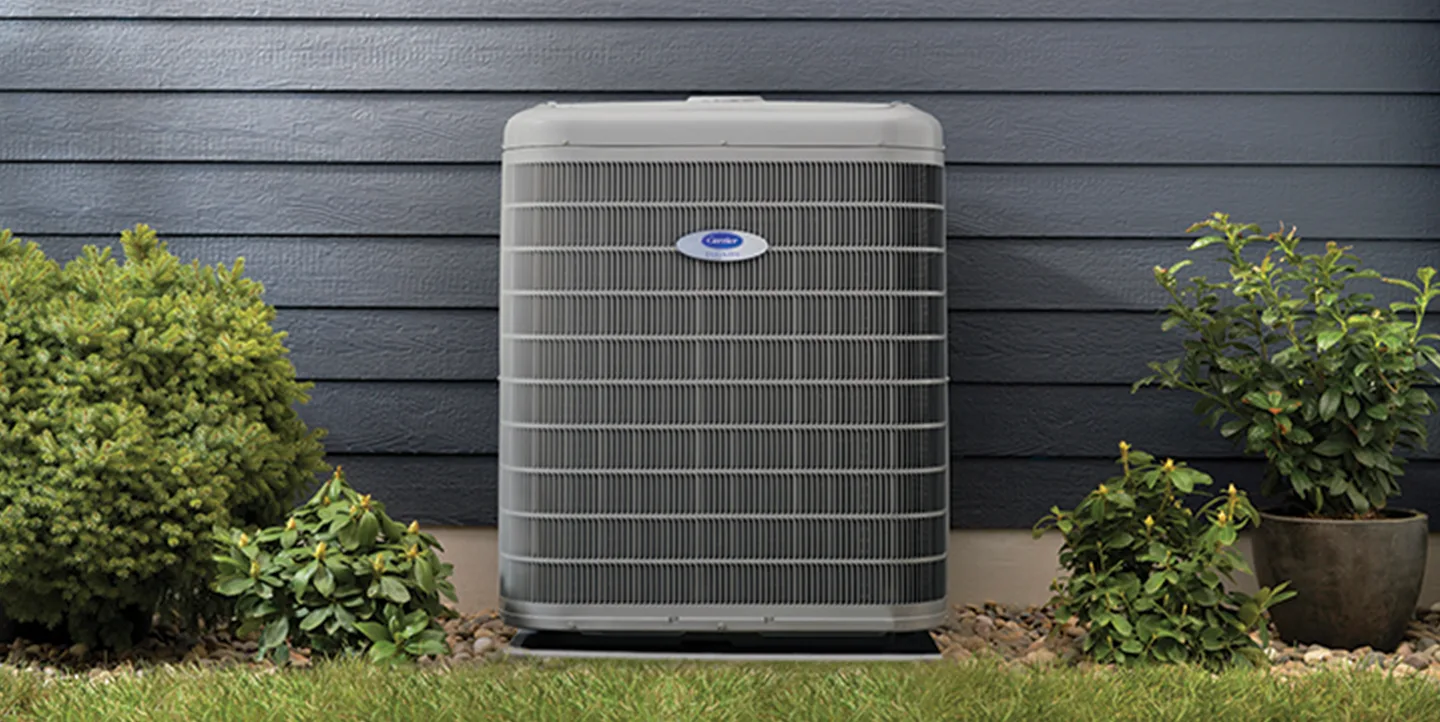
🟪 Lennox: The SLP99V modulating furnace coordinates very fine burner increments with a variable-speed blower, which keeps room temperature steadier during long winter evenings. The SL25XPV heat pump uses deep turndown at low speed to retain meaningful capacity into colder weather, while defrost logic avoids unnecessary reversals that would chill the coil. With dual fuel, the balance point can be set to local rates so electric carries shoulder seasons and gas covers deeper cold.

✅ Verdict: Both deliver premium winter comfort; Carrier has the edge in dual-fuel polish and smooth gas-heat feel, while Lennox counters with excellent low-speed heat pump strength.
Indoor Air-Quality Enhancements
🟦 Carrier: The communicating ecosystem ties filtration, humidity, and ventilation into one plan. High-MERV media cabinets are supported (MERV rates filter capture of small particles), and the control can lower cfm per ton (airflow per ton of cooling) during humidity pulls so the coil stays colder for better moisture removal. Whole-home humidifiers and ERV/HRV ventilators integrate cleanly (ERV/HRV exchange heat or moisture while bringing in fresh air), which helps hold indoor RH near the mid-40s to 50 percent band without overcooling rooms.

🟪 Lennox: IAQ modules integrate with the communicating control to coordinate media filtration, UV or electronic cleaners, humidification, and balanced ventilation while keeping duct external static pressure within blower targets (external static pressure is duct resistance, measured in inches of water column). Longer low-speed runs increase filter contact time and keep coil temperature aligned to latent removal when RH rises, reducing that cool-but-clammy feel.

✅ Verdict: Both handle IAQ exceptionally well; Carrier takes a small win for one-roof choreography that keeps fan, coil, and accessories moving in lockstep.
Installation & Serviceability
🟦 Carrier: Premium results depend on fundamentals: Manual J load (room-by-room heat gain/loss), Manual S selection (matching equipment to the load), and Manual D ducts (sizing and layout). Commissioning targets include 350 to 400 cfm per ton, total external static pressure at or below ratings, nitrogen pressure tests, deep evacuation, and charge verification with superheat and subcool readings (superheat and subcool confirm refrigerant is boiling and condensing in the right places). The control’s logs surface coil, compressor, and blower behavior so technicians confirm delta-T across the coil (delta-T is return-to-supply temperature change) quickly.
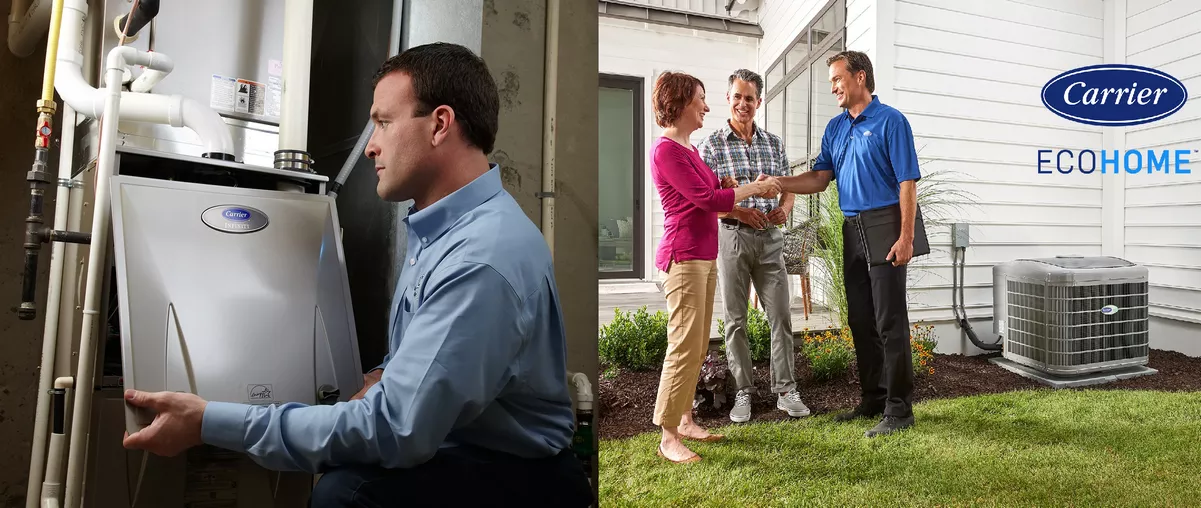
🟪 Lennox: The same discipline applies, with the communicating thermostat exposing airflow, temperatures, and faults that cut guesswork. Cabinets give direct access to coils, boards, and blowers, and documented coil and control pairings help preserve features after service. Where distributors stock the common boards and ECM modules, repairs are straightforward and the system returns to long, quiet cycles fast.

✅ Verdict: Trane has the practical edge for parts pipelines and uniform field processes, while Rheem matches well when commissioning is by the book.
Quick Buyer Match Guide
🟦🟦 Choose Carrier if you
You want a consumer-simple ladder of options, tightly coordinated IAQ under one control, top-tier dual-fuel behavior, and headline AC efficiency that plays well with rebates.
🟪🟪 Choose Lennox if you
You want the highest-possible AC efficiency targets, ultra-quiet outdoor operation, and a Signature trio that emphasizes deep low-speed capacity with very refined indoor comfort.
Conclusion
These are true flagship systems. Carrier leans into one-ecosystem orchestration, smooth furnace modulation, and broad dealer support that keeps service predictable. Lennox pushes for record efficiency and whisper-quiet low-speed performance that feels effortlessly premium. If rebate-friendly ratings and wide network support matter most, lean Carrier. If you prize top-of-sheet efficiency and ultra-low outdoor tonality, lean Lennox. In both cases, the best choice is the one paired with a contractor who sizes, ducts, charges, and commissions exactly to spec.



